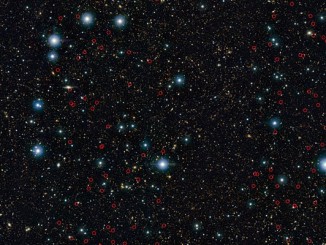The Flame Nebula in Orion comes to life in a new image released by the European Southern Observatory based on data collected over several years by astronomer Thomas Stanke and a team using the SuperCam instrument at the Atacama Pathfinder Experiment (APEX) in Chile’s Atacama Desert. The newly processed radio image, which includes a variety of other nebulae like the famous Horsehead, is shown in a box superimposed on a visible-light background image of the region from the Digitised Sky Survey 2. The huge molecular clouds of Orion are the nearest to the sun, located between 1,300 and 1,600 light years from Earth. It is home to the most active stellar nursery in the local neighborhood.




